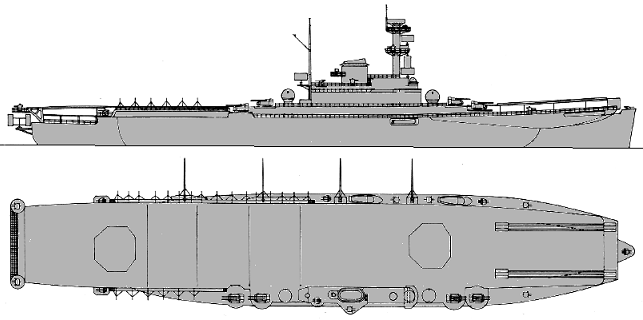
NAVYPEDIA
 Support the project with paypal
Support the project with paypal
Ships
| Name | No | Yard No | Builder | Laid down | Launched | Comp | Fate |
|---|---|---|---|---|---|---|---|
| Elbe (ex-Potsdam) | 497 | Blohm & Voss, Hamburg // Blohm & Voss, Kiel | 1934 | 16.1.1935 | 6.1936 // --- | cancelled 2.2.1943, accommodation ship | |
| Jade (ex-Gneisenau) | 893 | A G Weser, Bremen // KMW Wilhelmshaven | 1934 | 17.5.1935 | 1.1936 // --- | cancelled 25.11.1942, personnel transport |
Technical data
| Displacement standard, t | Elbe: 17527 Jade: 18160 |
|---|---|
| Displacement full, t | Elbe: 23500 |
| Length, m | Elbe: 189.0 wl 203.0 oa Jade: 191.0 wl 203.0 oa |
| Breadth, m | 26.8 wl 27.0 fd |
| Draught, m | 8.85 deep load |
| No of shafts | 2 |
| Machinery | Elbe: 2 electric motors, 2 Blohm & Voss / SSW turbine-generators, 4 Benson boilers Jade: 2 sets Deschimag geared steam turbines, 4 Wagner boilers |
| Power, h. p. | 26000 |
| Max speed, kts | 21 |
| Fuel, t | oil 4570 |
| Endurance, nm(kts) | 9000(19) |
| Armour, mm | flight deck: 20, hangar sides: 15 - 10 |
| Armament | 6 x 2 - 105/60 SK C/33, 5 x 2 - 37/80 SK C/30, 8 x 4 - 20/65 C/38, 24 aircraft (Bf109T fighters, Ju87C, Fi 167 diving bombers) |
| Electronic equipment | 3x FuMO 21 radars |
| Complement | 883 - 900 |
Air group
| Year | Fighters | diving bombers |
|---|---|---|
| 1943 (planned) | 12 Bf109T | 12 Ju87C |
Standard scale images

Elbe
Aircraft facilities
(fd - 5,022 m², ha - 2,664 m² / 15,078 m³): Flight deck: 186.0 x 27.0 m. Hangar: 148.0 x 18.0 x ? m. Two lifts, each (15.2 x 14.3 m, 6.5 t). There were 2 catapults of K-252 type. Aircraft fuel stowage: 100 t.
Project history
Decision to convert passenger liners Potsdam and Gneisenau to aircraft carriers was dated from May 1942, works on Potsdam started in December but they were cancelled in February 1943 and ship was used as accommodation. She was taken by Britain in June 1946 and renamed Empire Fowey. Works on Gneisenau never really started, she was reclassified as personnel transport and sunk by mine 2.5.1943 .
Ship protection
Flight deck would had 20mm and hangar sides 15-10mm protection. There was primitive anti-torpedo protection consisted of bulges and thin bulkheads.
 HOME
HOME FIGHTING SHIPS OF THE WORLD
FIGHTING SHIPS OF THE WORLD GERMANY
GERMANY AIRCRAFT CARRYING SHIPS
AIRCRAFT CARRYING SHIPS ELBE aircraft carriers
ELBE aircraft carriers
